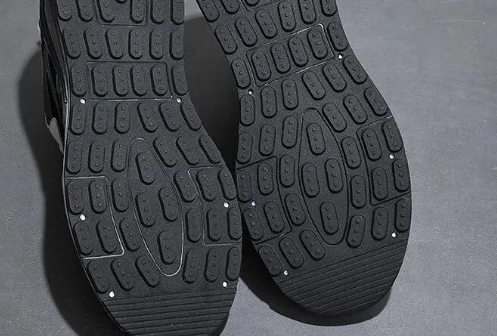Comparison of Advantages/Disadvantages of Common Sole Materials
Reading times:511 Update time:2024-09-06
Anti slip is just one of the very important requirements for the functionality of the sole. Utilizing anti-skid technology to achieve maximum safety and comfort is an essential requirement for human shoe soles. The anti slip effect is not ideal, which can easily cause people to slip or fall, resulting in accidents that can cause injuries and potentially result in huge costs. It may also cause some degree of damage to the brand image.
When considering anti-skid performance, one cannot ignore an important physical property - friction force. People can walk and ropes can be tied tightly because of the presence of friction. Generally speaking, when there is relative motion or a tendency towards motion between two contact surfaces, a parallel resistance force will be generated at the point of contact, which is called frictional force. Let's discuss the dry friction between solids alone. The causes of friction phenomena are very complex and currently not fully understood, while the frictional force between dry surfaces and the micro irregular plastic deformation of the relevant contact surfaces, the molecular force of contact force, are very important for frictional force.
The relationship between sole material and anti-skid effect
Dry anti-skid, in addition to considering the different contact surfaces, becomes a relatively simple consideration for the different anti-skid effects produced by different shoe soles under the same contact surface. The first thing to consider is the properties of the shoe sole material, including softness, hardness, actual contact surface, etc. In dry anti-skid, there is an absolute relationship between softness and hardness. Materials that are relatively soft will undergo significant deformation when in contact with the ground, while producing fine and irregular plastic deformation on the contact surface, resulting in a larger contact area. Therefore, there is a relatively large frictional force, and the anti slip effect is relatively improved. Although soft sole materials have strong anti-skid properties, excessively soft sole materials can easily cause deviations in basic physical properties and poor wear resistance. The commonly used sole materials are as follows:
1. Natural shoe sole: Generally, natural leather is applied to the sole, which is usually hard and dry anti-skid is not ideal. Usually, the structure is used, or the sole is combined with plastic or other anti-skid materials in a dot, strip or surface shape to increase the anti-skid performance.
2. PVC sole: Dry anti-skid performance is acceptable, wet anti-skid performance is acceptable, but not wear-resistant.
3. EVA foam sole: Dry anti-skid is acceptable, wet anti-skid is extremely unsatisfactory. Usually, shoe tread design is used to increase anti-skid performance, but because it is a foam material and soft in texture, its wear resistance is poor.
4. PU sole: Dry anti-skid performance is good, wet anti-skid performance is not ideal, wear resistance is still acceptable, lightweight and elastic, but it should not be stored for too long and should be worn regularly, otherwise it will hydrolyze in the natural environment.
5. TPR sole: Good dry anti-skid performance, poor wet anti-skid performance, wear resistance depends on foaming ratio and softness; It can be heated and melted for recycling.
6. Vulcanized rubber sole: It usually has good anti-skid effect and good wear resistance. The formula can be adjusted according to different needs to make rubber soles with different requirements.
7. Raw rubber sole: It has good dry anti-skid performance and wear resistance, but the quality is heavier.

